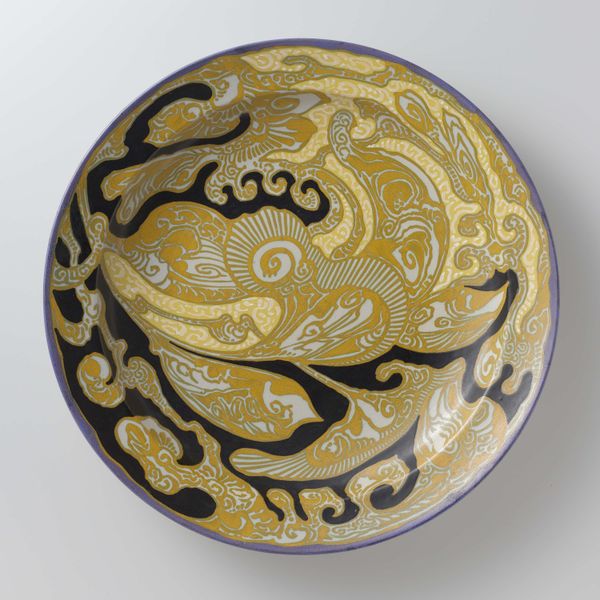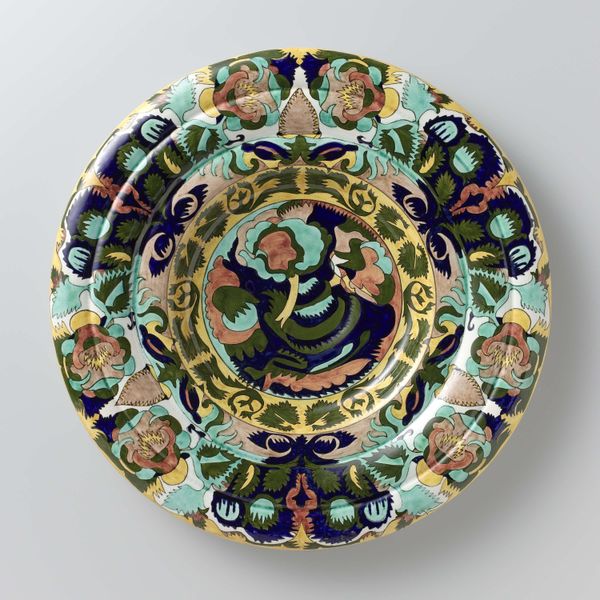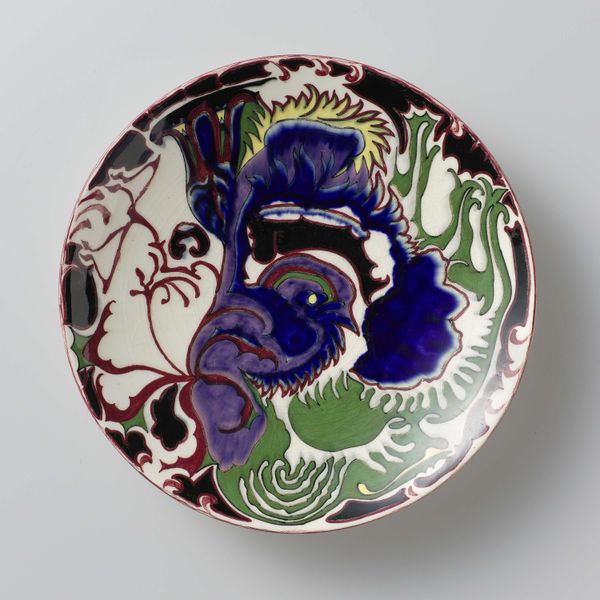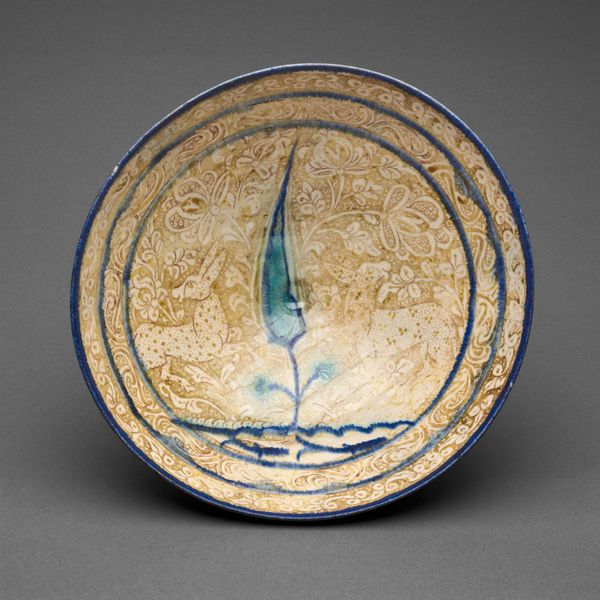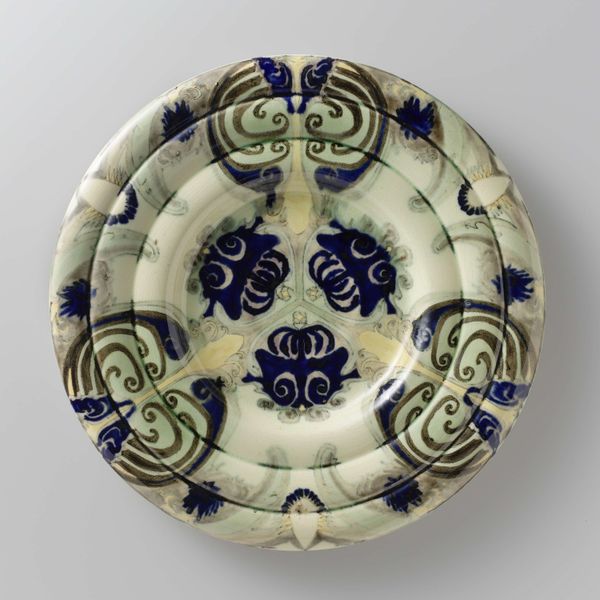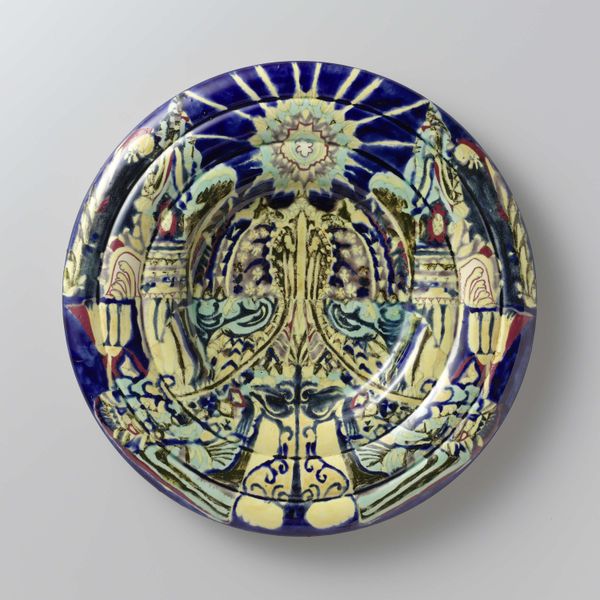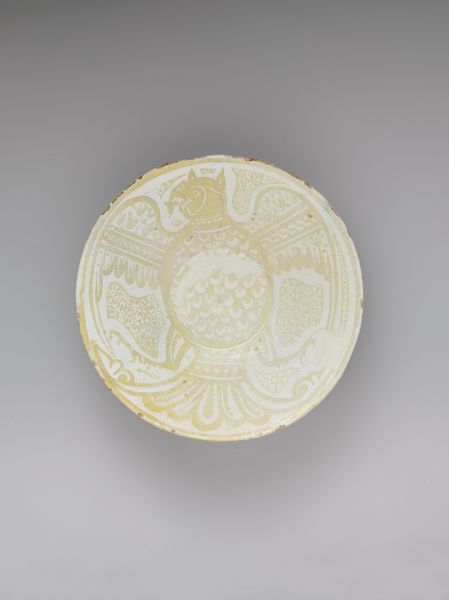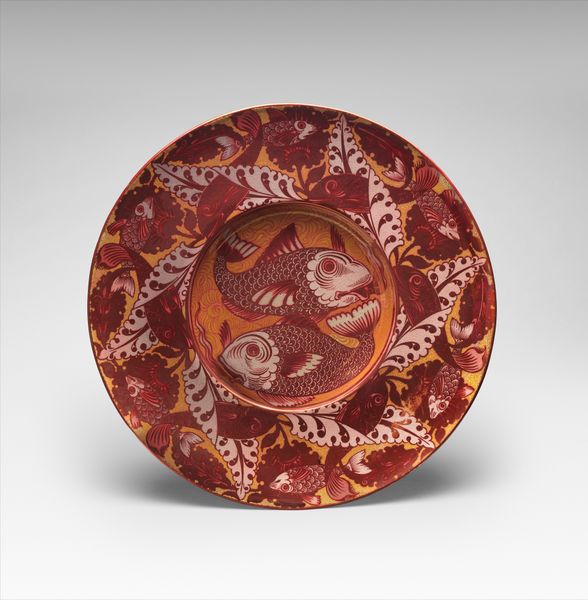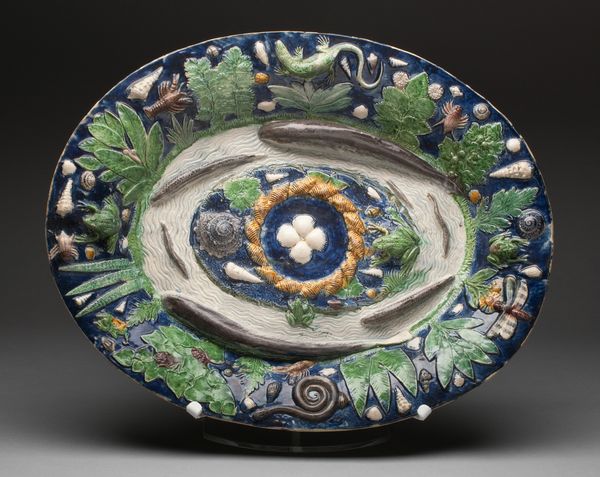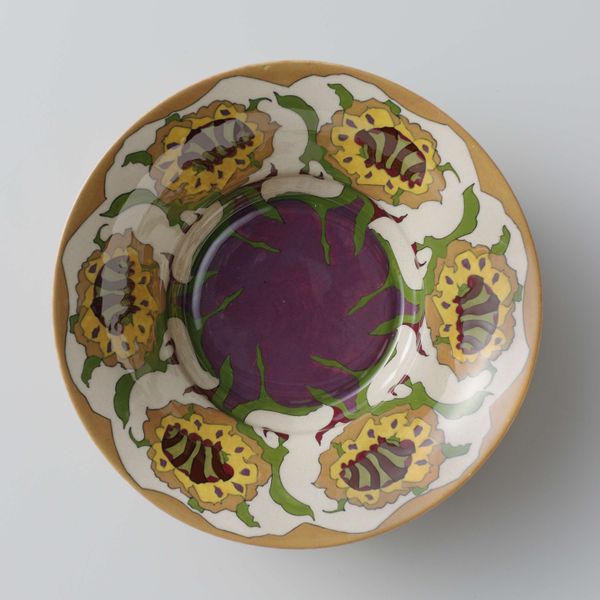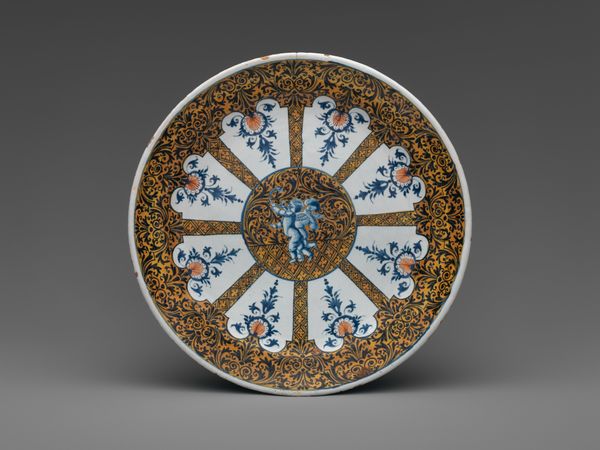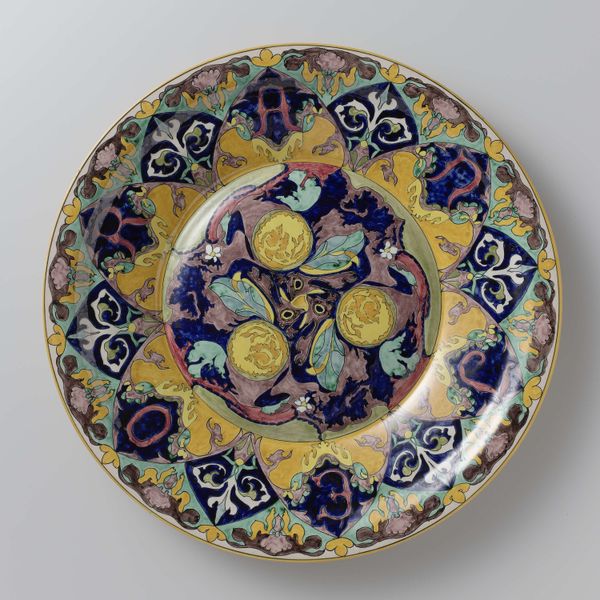
ceramic
#
art-nouveau
#
asian-art
#
ceramic
#
ceramic
#
decorative-art
Dimensions: height 3 cm, diameter 38.5 cm
Copyright: Rijks Museum: Open Domain
Editor: This is “Wandbord met het patroon vijver,” a ceramic wall plate made in 1893 by N.V. Haagsche Plateelfabriek Rozenburg. It's so interesting! The watery greens and blues create a fluid, almost dreamlike effect. What can you tell me about this piece? Curator: This plate beautifully demonstrates the influence of Asian art on European decorative arts during the Art Nouveau period. Factories, like Rozenburg, actively sought inspiration from Japanese prints and ceramics, adapting Eastern aesthetics to cater to a growing market for exotic and aesthetically refined goods. Editor: So, this wasn't just a personal artistic choice, but part of a bigger trend? Curator: Precisely. The plate reflects a wider socio-cultural fascination with the "Orient," and reveals how the imagery and artistic styles were selectively appropriated and reinterpreted for European consumers. The display of this type of plate also played a crucial role; these pieces transformed domestic spaces into personal museums, showcasing one's awareness and appreciation of global cultures. It encouraged an idea of self-cultivation through the collection and display of worldly goods. Editor: That's fascinating. So, in a way, this plate is not just a pretty object, but also a symbol of a particular moment in history and cultural exchange. I hadn't considered the public display aspect either. It changes my whole perspective! Curator: Indeed. By examining these pieces, we gain a more nuanced understanding of the complex interactions between art, commerce, and the social values of the time. Editor: I'll definitely look at decorative art differently now. Thanks for pointing out the context. Curator: My pleasure. Considering the plate’s function and how it shaped identities gives the work an added dimension.
Comments
No comments
Be the first to comment and join the conversation on the ultimate creative platform.
